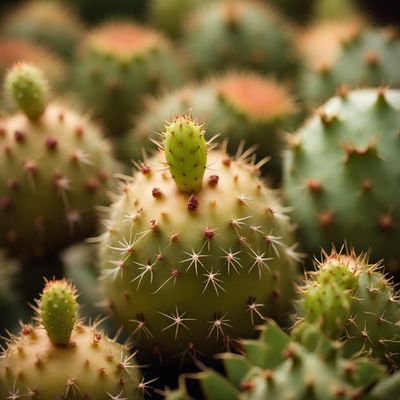
Ingredient
Saguaro fruits
Nature's Desert Delicacy: Saguaro Fruits
Saguaro fruits are oval-shaped fruits that grow on the saguaro cactus, a towering symbol of the American Southwest. They have a vibrant red or orange skin, which is covered in a dense layer of spines. Once peeled, the fruits reveal a juicy and sweet flesh that is filled with small black seeds. The flavor of saguaro fruits can be described as a combination of melon, strawberry, and cucumber, with a hint of tanginess.
Origins and history
Saguaro fruits have deep cultural and historical significance among Native American tribes, particularly the Tohono O'odham people. These fruits were traditionally harvested and used as a vital food source during the hot summer months. They were also incorporated into various ceremonial and medicinal practices. Today, saguaro fruits continue to be cherished for their unique flavor and are enjoyed fresh or used in the preparation of jams, jellies, and beverages.
Nutritional information
Saguaro fruits are a good source of vitamin C and contain dietary fiber. They are also rich in antioxidants, which help protect the body against oxidative stress. However, they are relatively high in natural sugars and should be consumed in moderation, especially by individuals with diabetes or those watching their sugar intake.
Allergens
May cause allergic reactions in individuals with sensitivities to cactus or other fruits.
How to select
When selecting saguaro fruits, look for ripe fruits that are firm to the touch and have a vibrant color. Avoid fruits that are overly soft or have blemishes, as these may indicate spoilage. It is important to handle saguaro fruits with caution due to their spines, so use protective gloves or a towel when peeling or handling them.
Storage recommendations
To prolong the freshness of saguaro fruits, store them in a cool, dry place away from direct sunlight. If the fruits are not fully ripe, they can be left at room temperature to continue ripening. Once ripe, they can be stored in the refrigerator for a few days. It is best to consume saguaro fruits as soon as possible after harvesting or purchasing for optimal flavor and texture.
How to produce
Saguaro cacti are slow-growing and require specific desert conditions to thrive. They can be challenging to cultivate outside of their natural habitat, making them primarily harvested from wild saguaro cacti. However, if you live in a desert region and have suitable conditions, you can attempt to grow saguaro cacti from seeds or young plants. It is essential to research and understand the specific care requirements of saguaro cacti before attempting to grow them.
Preparation tips
Saguaro fruits can be enjoyed fresh by peeling off the spines and skin, revealing the juicy flesh inside. They can be eaten as a refreshing snack on their own or used in various culinary creations. Saguaro fruits can be blended into smoothies, pureed for sauces or syrups, or incorporated into desserts such as ice creams, sorbets, and pies. They can also be used to make jams, jellies, and beverages, adding a unique desert twist to these preparations.
Culinary uses
Saguaro fruits are commonly used in traditional Native American dishes, such as saguaro fruit syrup and saguaro fruit bread. They are also enjoyed fresh or used in the preparation of jams, jellies, and beverages. In modern cuisine, saguaro fruits are often incorporated into desserts, such as ice creams, sorbets, and pies, to showcase their unique flavor and vibrant color. Their cultural significance and desert origin make them a sought-after ingredient in the American Southwest.
Availability
Saguaro fruits are native to the deserts of North America, particularly the Sonoran Desert, which spans parts of Arizona, California, and Mexico. They are primarily harvested from wild saguaro cacti, as cultivating these cacti outside of their natural habitat can be challenging.



